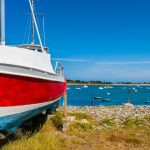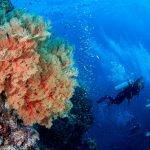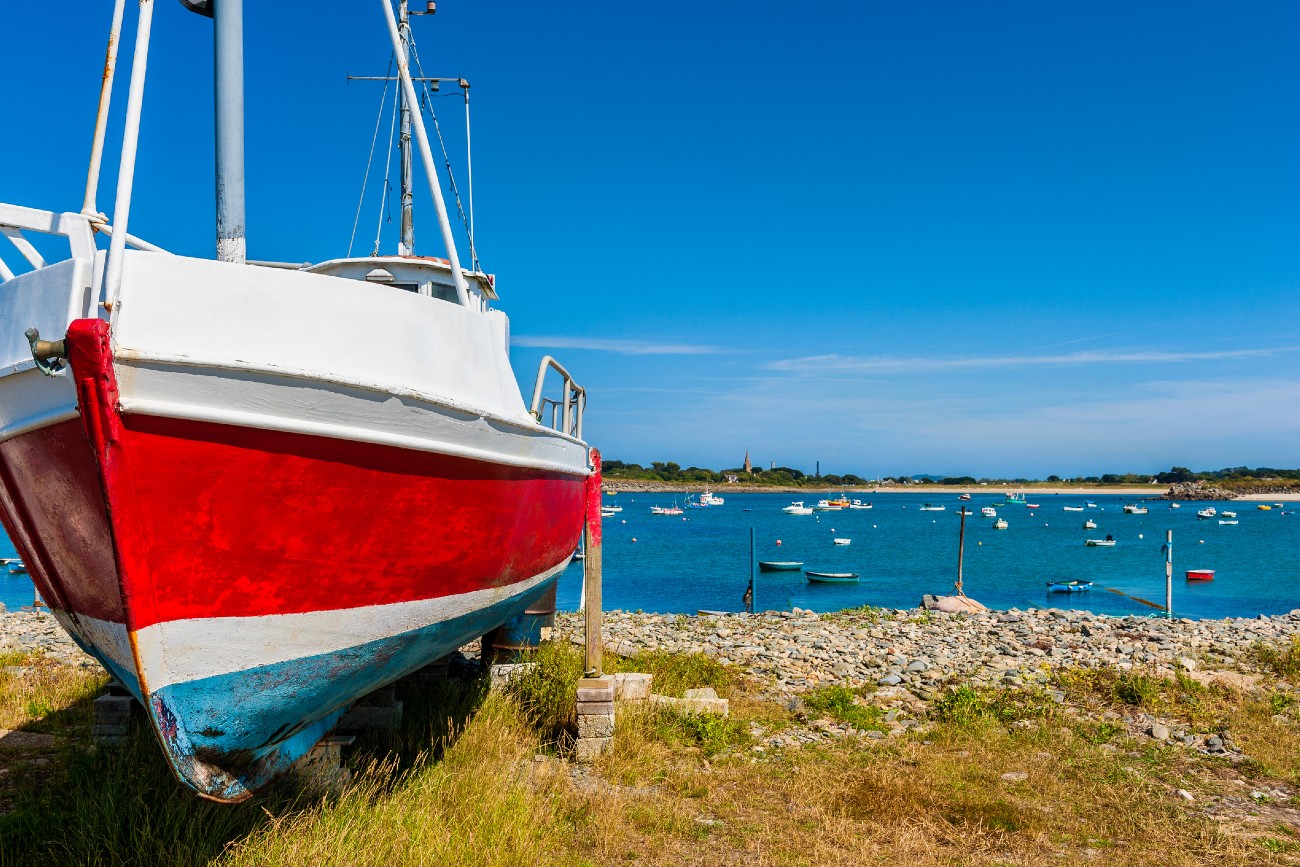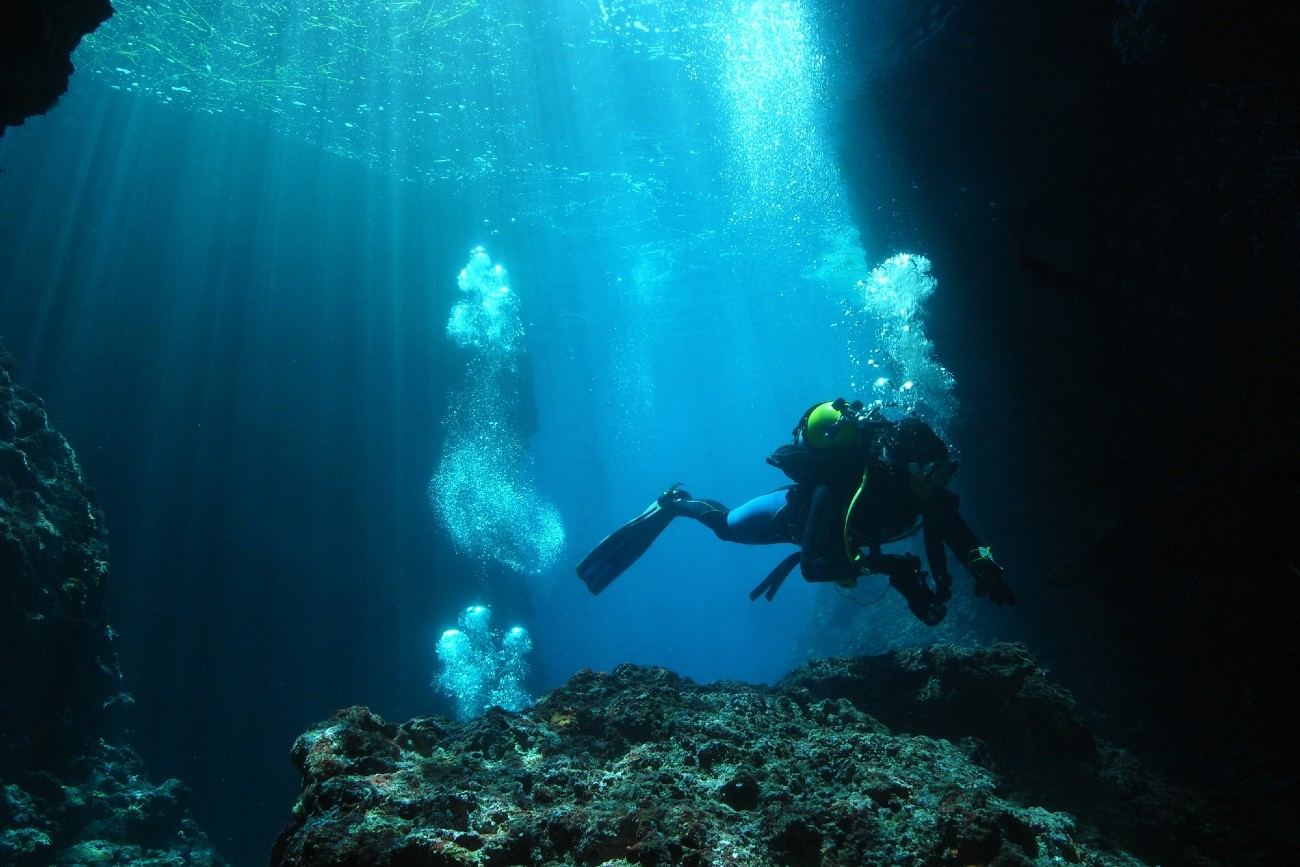
If you’re into diving and you want to experience everything that the Channel Islands have to offer, then you have come to the right place!
The Channel Islands are one of the best places in the British Isles for diving and offer a wide variety of different types of dives. The rugged coastline, shipwrecks, and hundreds of reefs around the different islands offer divers a unique experience that they will find hard to beat anywhere else in the British Isles.
There are hundreds of shipwrecks surrounding the different islands, particularly Jersey, many of which are hundreds of years old, including several shipwrecks from World War 2. If you love diving wrecks, then you’re going to love what the Channel Islands has to offer divers.
It’s the far southern location of the Channel Islands, which makes them so appealing to divers from across the United Kingdom and Europe. The beautiful clear waters are home to thousands of different fish species, many of which are extremely rare and would be mostly unknown to most British recreational divers.
Diving The Channel Islands – What To Expect
The average water temperature around the Channel Islands during the warmer summer months is 18-20 degrees Celsius (64-68 degrees Fahrenheit). April through to August is the peak dive time as this is when the Channel Islands receive the least amount of rain.
The average visibility surrounding the Channel Islands can reach approximately fifteen meters which is why many divers consider it such an amazing place to dive. It’s hard to find better visibility anywhere in England.
One hazard in the Channel Islands that divers need to be very aware of is the large tidal fluctuations around the islands. The tidal ranges can drop and rise quite a lot, and anyone diving should seek some local professional advice about the tidal conditions before planning their dives. As with any dives, it’s always strongly suggested to do thorough research about tidal conditions before you enter the water.
The Channel Islands of Alderney, Guernsey, Jersey, and Sark are located in the English Channel between England and France. Of all the islands, Sark is the smallest inhabited island and is proud to boast the warmest sea temperatures in the entire British Isles. You have several different options when it comes to diving around Sark, including departing from the shore or diving from a vessel. Many divers choose to depart from the south of England on dive charter boats or live-aboard dive vessels.
One of the attractions to diving the Channel Islands is the large variety of marine life, drop-offs, shipwrecks, and marine life. Don’t be surprised to encounter a dozen different varieties of wrasse, mullet, bass, pipefish, and large pollock cruising the shallow waters.
Out in the deeper water, you’ll encounter large jewel anemones, sunset coral cups, dead men’s fingers, and fan coral. Living in the many wrecks surrounding the Channel Islands, you’ll get to discover and meet large schools of pouting, wrasse, orange cuckoo, and huge conger eels. When you look down from above, don’t be surprised to see huge rays and dogfish cruising the bottom.
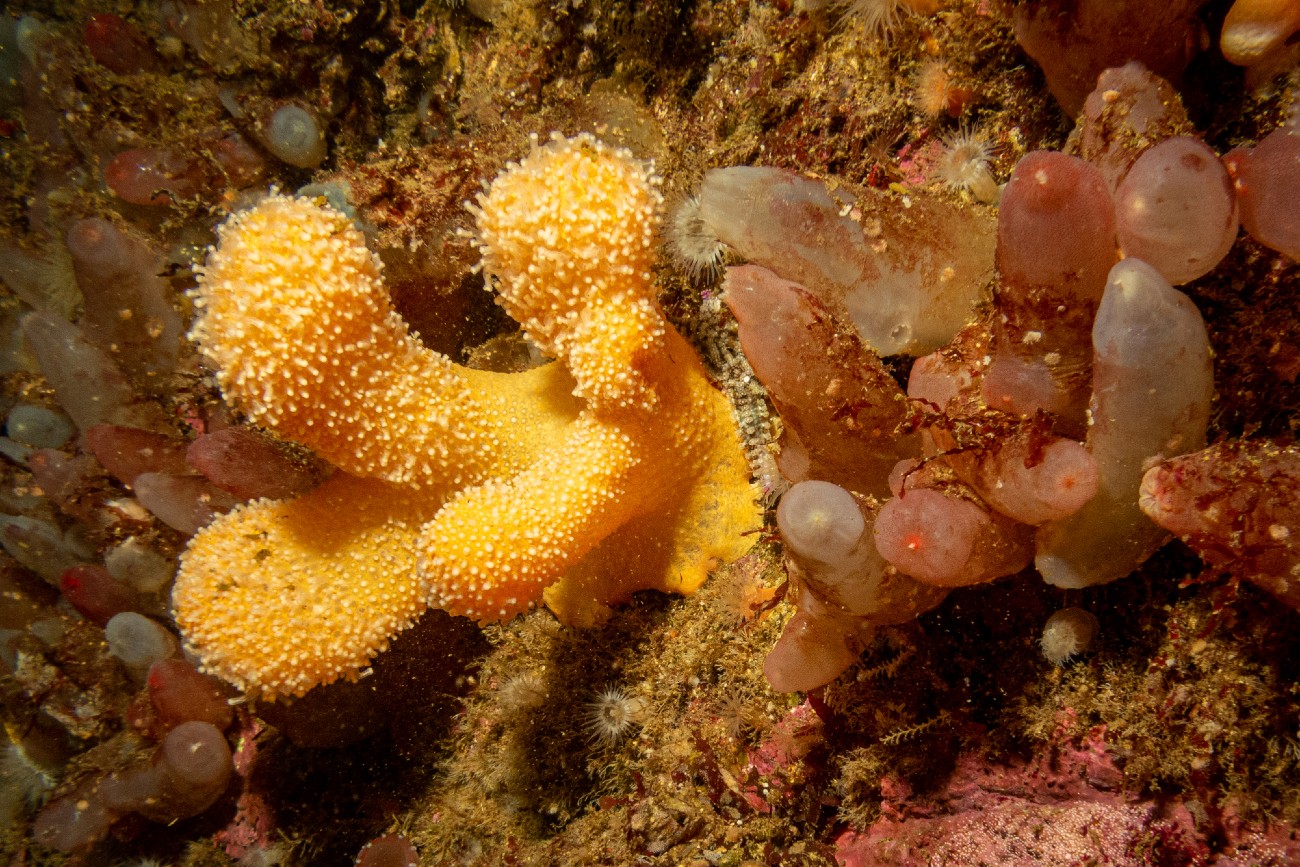
Sea squirts
Many of the different fish and coral, which would be considered rare on the British coast, will be discovered in abundance in the Channel Islands because of their far south location. One of the rare species you may be lucky to discover is ormers. Ormers are a type of shellfish that can only be found on the Channel Islands. You may also be fortunate enough to see small pink and purple striped prawns that inhabit the area and look amazing.
Divers have also reported encounters with massive basking sharks, bottlenose dolphins, triggerfish, and even seahorses. There is a world full of life beneath the surface in the Channel Islands just waiting to be discovered by you!
Most of the diving done in the Channel Islands centers around the islands of Jersey, Sarks, and Guernsey.
Jersey – An Island Made for Divers
Jersey is the largest island in the Channel Islands and lies just ninety miles off the southern coast of England and just fourteen miles from the coast of France. Jersey Island boasts over fifty miles of rugged coastline, sandy beaches, and small isolated and private rocky coves.
When you travel offshore from the main island of Jersey, you’re going to encounter reefs and small islands of all shapes and sizes spread out all over the area. So if you love diving old shipwrecks, then this is one of the best places in the British Isles to do it.
The clear water surrounding Jersey Island is several degrees warmer than the majority of other British waters while also winning awards for how clean and crystal clear it is. The warmer water surrounding Jersey Island is what makes it such an ideal home for the hundreds of different marine species which inhabit the area.
Being the largest of the islands in the Channel Islands, Jersey has a bunch of dive centers and accommodation options available to divers. If you are planning on diving in Jersey or any of the other islands in the Channel Islands in summer, then it’s a good idea to plan ahead because summer is the peak visitor time, and the islands can get quite busy.
Channel Islands Diving – Marine Life Around Jersey Island
It’s hard to find a location with such varying underwater habitats that are also inhabited by such a large and diverse range of sea life. The rocky coastline that surrounds Jersey Island boasts a huge amount of marine life. The exciting and beautiful types of coral can be accessed from the shoreline and also from offshore at one of the many different reefs.
The shallow bays surrounding the island of Jersey boast a large amount of resident wrasse, bass, pipefish, pollack, and mullet. In addition, don’t be surprised to discover the hilarious and adorable faces of top pot blennies, tube worms, nudibranchs, and sea squirts. There is an entire world of life to be discovered among the kelp beds, rocks, and coral.
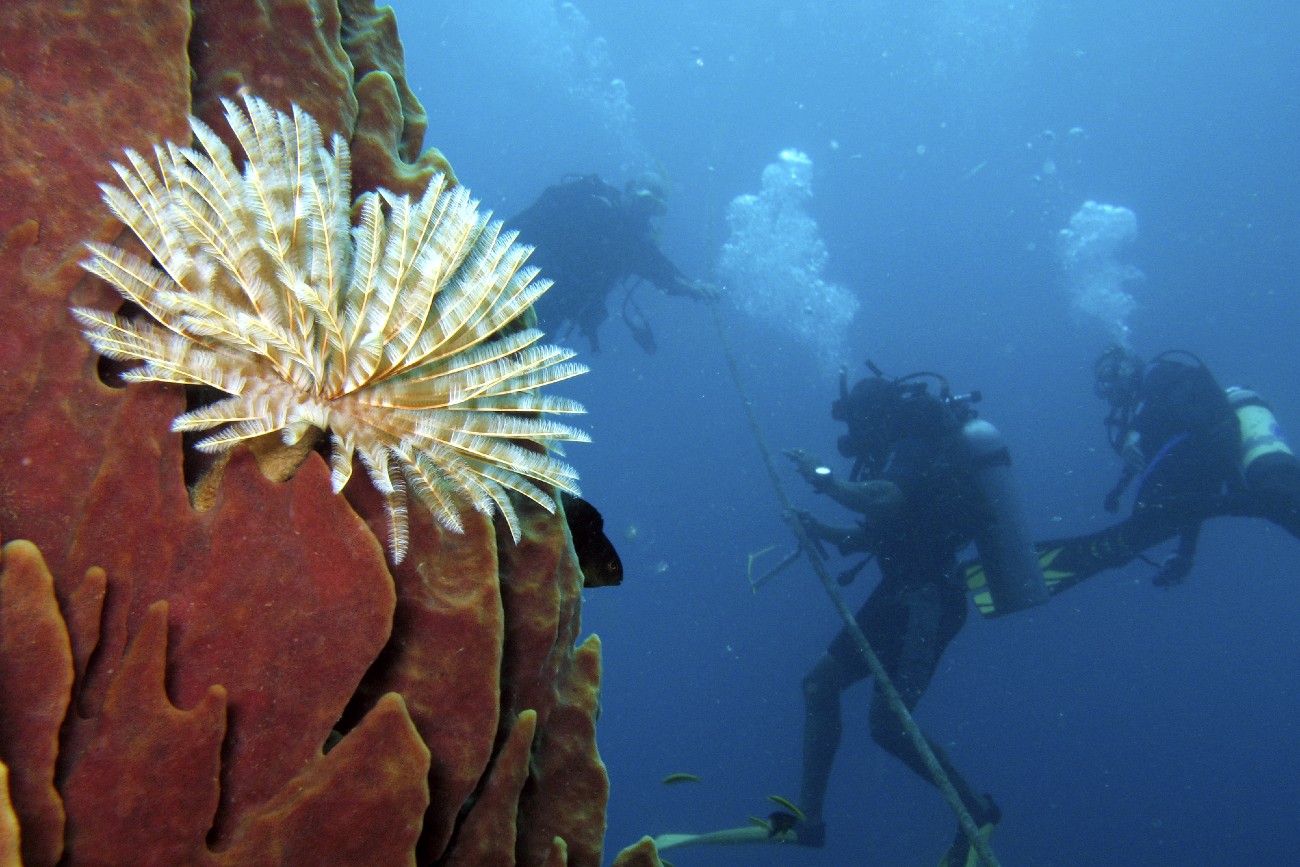
Tube worms
Suppose you are fortunate enough to be diving in the summer months. In that case, you’re likely to encounter large lobsters, crabs, and crayfish hiding in their rocky homes and be shocked to see a cuttlefish cruising around the clear waters and John Dory.
Out in the deeper waters offshore, you’ll encounter massive rock faces that slide away towards the bottom and are covered in luminous blue, pink, orange, emerald, green jewel anemones. Huge fan corals and dead men’s fingers are also quite common in the offshore waters surrounding Jersey Island.
If you a fortunate enough to dive one of the many shipwrecks in the water around Jersey Island, you’re also likely to see the exotic orange and blue cuckoo wrasse, huge conger eels, and also large schools of pouting.
The local game laws in the Channel Islands prevent divers from keeping ormers, lobsters, and crayfish to preserve game levels. Still, divers are allowed to catch crabs, fish, and there are also permits available to bring in a feed of the delicious local scallops.
Although diving with full scuba equipment and using spearguns isn’t illegal, it’s a method that is frowned on by the locals of the Channel Islands. The majority of them preferring to spear with snorkeling equipment only. However, if you would rather shoot fish with a camera, not a spear, you’re going to discover diverse and beautiful sea life living just below the surface.
Jersey Island Tides and Currents
There is no denying that the Channel Islands, including Jersey Island, have one of the largest tidal water movements in the world. There can be as much as a 40-foot difference between the low and high watermarks in a big spring tide. Therefore, it’s a great idea to purchase a local dive table and also seek advice from one of the many dive centers before you enter the water.
If you are planning on diving from the shore of any of the Channel Islands, then it’s essential to check out the local tidal conditions. On the other hand, if you’re planning on hitting one of the many dive spots offshore, then you can use the tidal current to your advantage. In addition, there are some fantastic locations available for drift dives around the local islands and reefs.
As an example of the extreme tidal conditions, it’s sometimes possible to walk over two miles from the high watermark out over large areas of exposed reefs and seabeds. At high tide, the island of Jersey has a surface area of just forty-five square miles, but at low tide, that surface area is approximately sixty-three square miles. The tidal conditions around Jersey island are some of the strongest in the world and not something that should be taken lightly even by an experienced scuba diver.
Jersey Island Dive Locations and Attractions
One of the reasons the Channel Islands, including the Jersey Islands, are so popular as a diving destination is the diverse variety of dives that you can do both offshore and offshore. There are dives for all experience levels, including beginner, intermediate, and advanced divers. It doesn’t matter what level of experience you have; the Channel Islands offer something exciting for everyone.
- Shore Diving Jersey Island – Undeniably, the most popular shore-dive in Jersey Island is Bouley Bay. Bouley Bay offers a large sheltered and rocky cover that lies on the northeast of the coastline. There is a large granite harbor wall and also a rocky promontory called L Islet. As you venture around the bay, you’ll encounter a ring of kelp that eventually gives way to a light, sandy bottom. There is a 10-12 meter gradual slope which makes Bouley Bay perfect for all levels of experience.
- Bonne Nuit Bay – Bonne Nuit Bay lies to the west of Bouley Bay, and Rozel lies to the east. All three have a similar type of bottom and offer the same type of diving experience. So, if you find that one is too crowded, try heading to one of the other two bays.
- Catherines Breakwater – On the south side of the breakwater in St. Catherines Breakwater, there is an extremely popular shore dive, but it’s best done on a high tide when you get the best water visibility. The breakwater itself is over half a mile long and home to a variety of flora and fauna. During the warm summer months, you can experience the breeding habits of the spider crab as it makes its way into shallow water to breed in large numbers.
If you’re interested in something a little different, there are always several drift dives that are run and operated by local dive companies on Jersey Island. These organized dives are great for beginner divers or anyone looking to experience a relaxed dive under professional conditions.
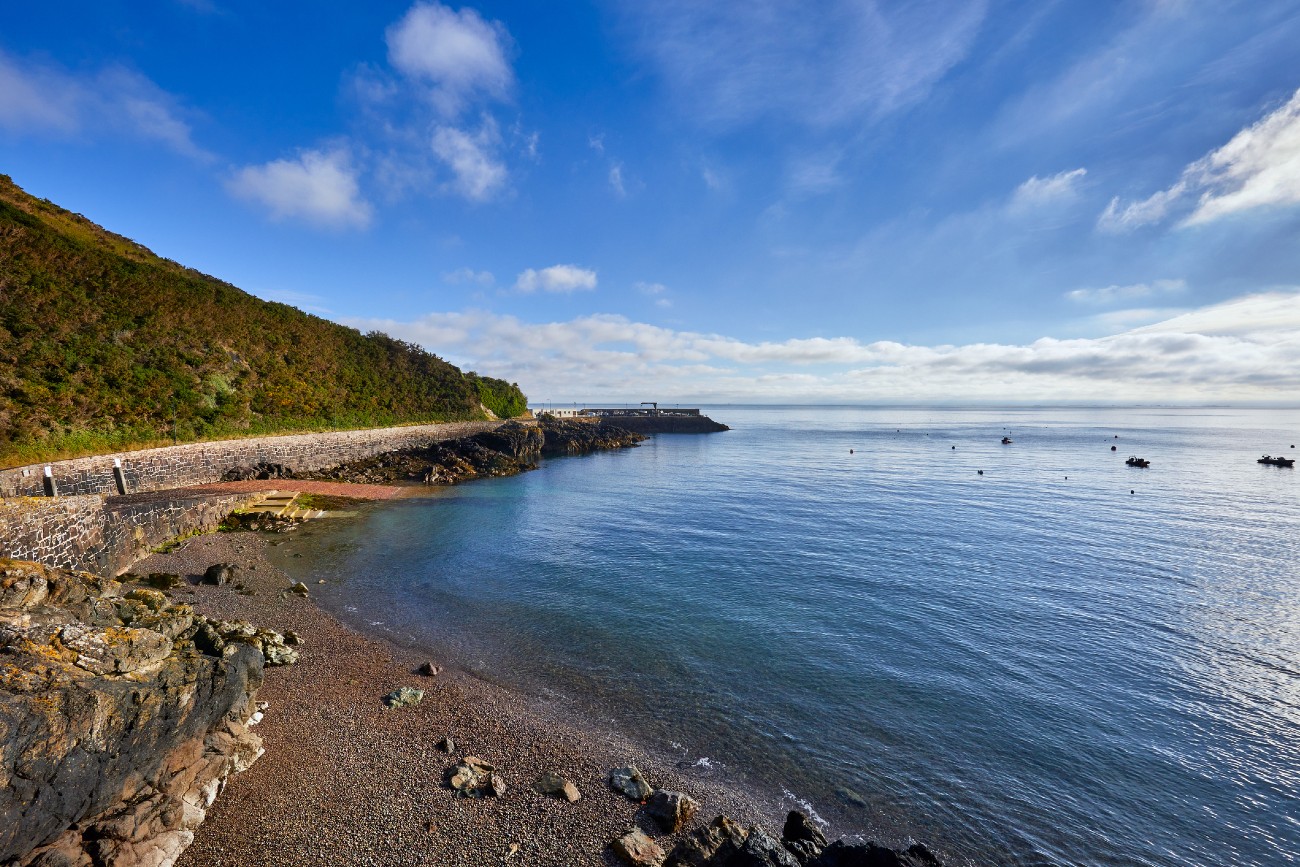
Bouley Bay, Jersey
Jersey Island Shipwrecks and Dive Sites
Diving in the Channel Islands wouldn’t be complete without diving on one of the many shipwrecks which are scattered throughout the area. The treacherous tidal conditions, half-submerged reefs, and rocky shores of the Channel Islands have bought many experienced captains and ship owners into grief.
Being occupied for over five years by the Germans during World War 2, the Channel Islands are also home to a large variety of WW2 shipwrecks. So if you consider yourself a war history buff and diving enthusiast, there are many WW2 shipwrecks to explore around the islands.
- SS Schokland – The SS Schokland is easily one of the most visited shipwrecks in the Channel Islands. The Schokland was a Dutch freighter that quickly sank in treacherous waters after hitting a reef in 1943 while under the control of the Germans. Sitting approximately 225 feet long and resting upright on the sandy bottom, the shipwreck is best dived at slack water. Every inch of the Schokland is covered in marine life, with huge clouds of fish cruising around the surrounding area. There are hundreds of small items to be found in the sandy water surrounding the wreck, including broken glass and china, and divers had even found perfume bottles and women’s shoes, which help to spread the rumor that there were French ‘ladies of the night’ on board the vessel when it sank. A rumor the German authorities always denied.
- SS Kronwyck – Another German ship, the SS Kronwyck, was a small armed coastal freighter, also lies upside at a similar depth to the Schokland. The Kronwyck was allegedly bombed by two RAF fighters in 1942 and are rumored to be lying somewhere not far from the wreck, but divers haven’t managed to find their exact location yet. Maybe you could be the lucky diver to discover one or both of the RAF aircraft? The damage to the Kronwyck allows you to see into the two large boilers, and the wreck itself still has the large propellers and guns intact.
- SS Princess Ena –Princess Ena was a large passenger ship that sank quickly after a fire broke out in the 1st class cabin area in 1935. Lying in about forty meters of water nine miles southwest of the Corbiere lighthouse, the wreck is home to a large amount of marine life, and the hull itself is split into three or four large pieces.
- The La Mauve – Unlike many of the other shipwrecks surrounding the Channel Islands, the La Mauve was sunk on purpose by the Jersey Underwater Center about one mile off of Bouley Bay. The 60-year-old vessel was sunk in 1993 and is now a large artificial reef that attracts a huge amount of marine life. In addition, the small size of the La Mauve makes it an ideal shipwreck for beginners to dive as it’s almost impossible to get lost or disoriented while diving into the wreck.
- M343 Minesweeper – Found on the Les Minquiers reef south of Jersey Islands, you’ll discover the German M343. It was one of four minesweepers based in the Channel Islands during WW2. Unfortunately, she was sunk in action and now rests in about 30 meters of water with her bow section broken off. Nevertheless, it’s a fantastic dive for anyone that’s interested in military history and also wants to experience some brilliant marine life.
The 101 of Diving In The Channel Islands! – Conclusion
As you can see from the information above, the Channel Islands are truly home to a diverse and exciting marine life and natural environment that’s almost impossible to find anywhere else in the British Isles.
It doesn’t matter what type of diving you want to do, scuba diving or snorkeling, or what level of experience you have. There is a different dive difficulty for every diver, from beginner to advanced. If you are planning a trip to the Channel Islands in summer, which is probably the best time to visit, then plan in advance because they are a popular tourist spot during the warmer summer months, and accommodation can book quickly.
If you want to find out any more about diving in the Channel Islands, then please don’t hesitate to check out any of our other articles or contact us directly. Our friendly and professional team is always happy to help.
Would you like to learn more about other activities you can experience in the Channel Islands? Read the following article: The Channel Islands: A paradise that invites you to walk


